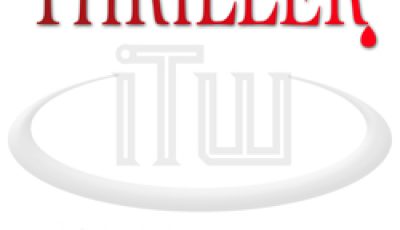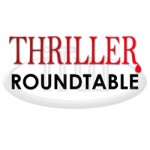

April 8 – 14: “In a world with fast turnarounds in technology of all types, how do authors equip their characters with the most modern devices?”
 This week we join ITW Members Jonathan Maberry, Thomas M. Malafarina, Nancy J. Cohen, Starr Gardinier and Helen Grant to ask: “In a world with fast turnarounds in technology of all types, how do authors equip their characters with the most modern devices? How do writers explain technology without boring readers?”
This week we join ITW Members Jonathan Maberry, Thomas M. Malafarina, Nancy J. Cohen, Starr Gardinier and Helen Grant to ask: “In a world with fast turnarounds in technology of all types, how do authors equip their characters with the most modern devices? How do writers explain technology without boring readers?”
~~~~~
 Jonathan Maberry is a NY Times bestselling author, multiple Bram Stoker Award winner, and freelancer for Marvel Comics. His novels include EXTINCTION MACHINE, FIRE & ASH, PATIENT ZERO and many others. His award-winning teen novel, ROT & RUIN, is now in development for film. He is the editor of V-WARS, an award-winning vampire anthology. Since 1978 he’s sold more than 1200 magazine feature articles, 3000 columns, plays, greeting cards, song lyrics, and poetry.
Jonathan Maberry is a NY Times bestselling author, multiple Bram Stoker Award winner, and freelancer for Marvel Comics. His novels include EXTINCTION MACHINE, FIRE & ASH, PATIENT ZERO and many others. His award-winning teen novel, ROT & RUIN, is now in development for film. He is the editor of V-WARS, an award-winning vampire anthology. Since 1978 he’s sold more than 1200 magazine feature articles, 3000 columns, plays, greeting cards, song lyrics, and poetry.
 Thomas M. Malafarina is an author of horror fiction from Berks County, Pennsylvania. He has published four horror novels 99 SOULS, BURN PHONE, EYE CONTACT and FALLEN STONES as well as for collections of horror short stories; 13 NASTY ENDINGS , GALLLERY OF HORROR, MALAFARINA MALEFICARUM Vol. 1, MALAFARINA MALEFICARUM Vol. 2 and most recently GHOST SHADOWS. He has also published a book of often strange single panel cartoons called YES I SMELLED IT TOO; CARTOONS FOR THE SLIGHTLY OFF CENTER.
Thomas M. Malafarina is an author of horror fiction from Berks County, Pennsylvania. He has published four horror novels 99 SOULS, BURN PHONE, EYE CONTACT and FALLEN STONES as well as for collections of horror short stories; 13 NASTY ENDINGS , GALLLERY OF HORROR, MALAFARINA MALEFICARUM Vol. 1, MALAFARINA MALEFICARUM Vol. 2 and most recently GHOST SHADOWS. He has also published a book of often strange single panel cartoons called YES I SMELLED IT TOO; CARTOONS FOR THE SLIGHTLY OFF CENTER.
 Nancy J. Cohen is the award-winning author of eighteen romance and mystery novels. Her humorous Bad Hair Day mystery series features hairdresser Marla Shore, who solves crimes with wit and style under the sultry Florida sun. Several of these titles have made the IMBA bestseller list. Nancy’s paranormal romances are also popular with fans. Currently she writes the Drift Lords series combining Norse myths, magic, adventure and romance in a contemporary setting.
Nancy J. Cohen is the award-winning author of eighteen romance and mystery novels. Her humorous Bad Hair Day mystery series features hairdresser Marla Shore, who solves crimes with wit and style under the sultry Florida sun. Several of these titles have made the IMBA bestseller list. Nancy’s paranormal romances are also popular with fans. Currently she writes the Drift Lords series combining Norse myths, magic, adventure and romance in a contemporary setting.
 A paralegal by day, she’s an author by night. Reina has appeared in a blaze and made her mark on the literary world. Because of her unique style, she is known for her works’ distinctive voice, making every book’s character stand out. Reina is a member of ITW and of Sisters in Crime. Reina is also an executive editor for Suspense Magazine. Read more about Starr on her website or visit her blog.
A paralegal by day, she’s an author by night. Reina has appeared in a blaze and made her mark on the literary world. Because of her unique style, she is known for her works’ distinctive voice, making every book’s character stand out. Reina is a member of ITW and of Sisters in Crime. Reina is also an executive editor for Suspense Magazine. Read more about Starr on her website or visit her blog.
 Helen Grant was born in London in 1964. She read Classics at Oxford, then worked in marketing for ten years to fund her love of travelling. In 2001, she and her family moved to Bad Münstereifel in Germany. It was exploring the legends of this beautiful old town that inspired her to write her first novel. In 2008 she moved to Flanders, where Silent Saturday is set. Helen Grant is a highly acclaimed YA author. Her debut novel attracted praise from critics and readers alike and was shortlisted for the CILIP Carnegie Medal.
Helen Grant was born in London in 1964. She read Classics at Oxford, then worked in marketing for ten years to fund her love of travelling. In 2001, she and her family moved to Bad Münstereifel in Germany. It was exploring the legends of this beautiful old town that inspired her to write her first novel. In 2008 she moved to Flanders, where Silent Saturday is set. Helen Grant is a highly acclaimed YA author. Her debut novel attracted praise from critics and readers alike and was shortlisted for the CILIP Carnegie Medal.
- LAST GIRL MISSING with K.L. Murphy - July 25, 2024
- CHILD OF DUST with Yigal Zur - July 25, 2024
- THE RAVENWOOD CONSPIRACY with Michael Siverling - July 19, 2024
